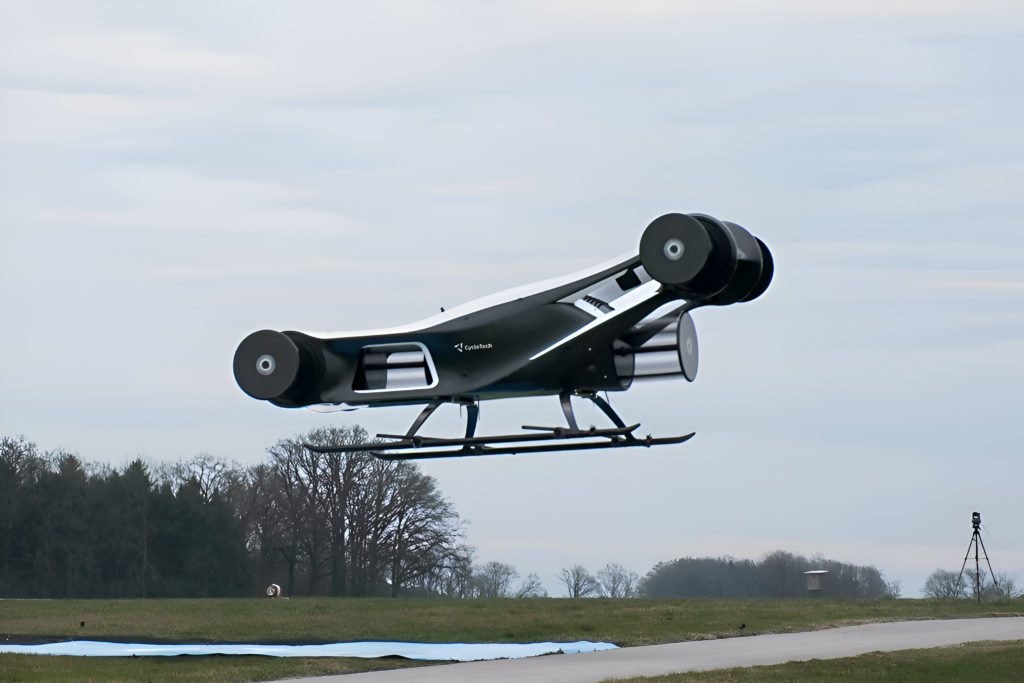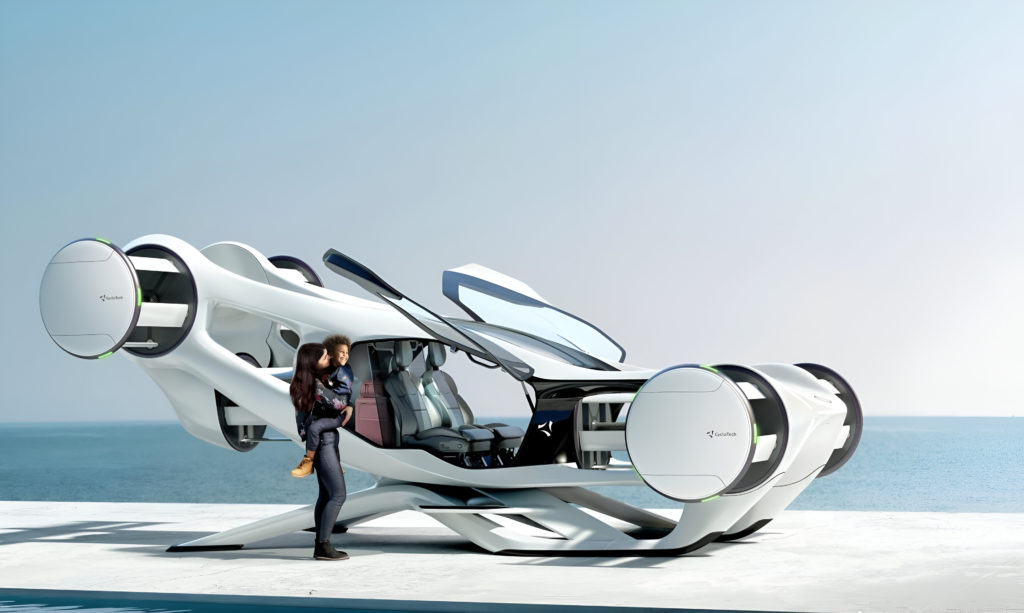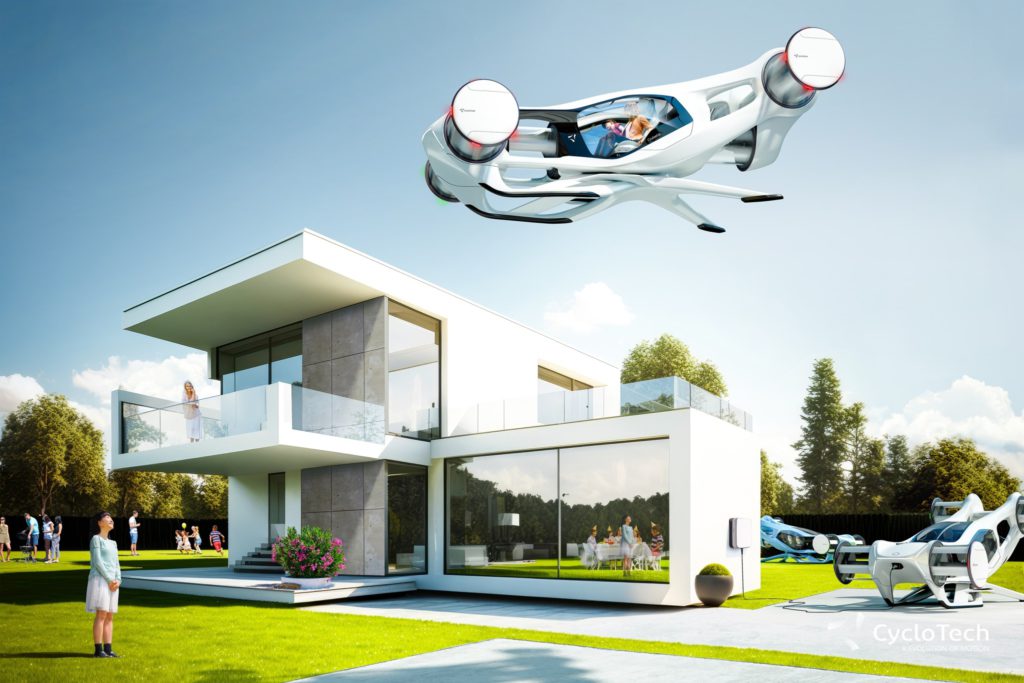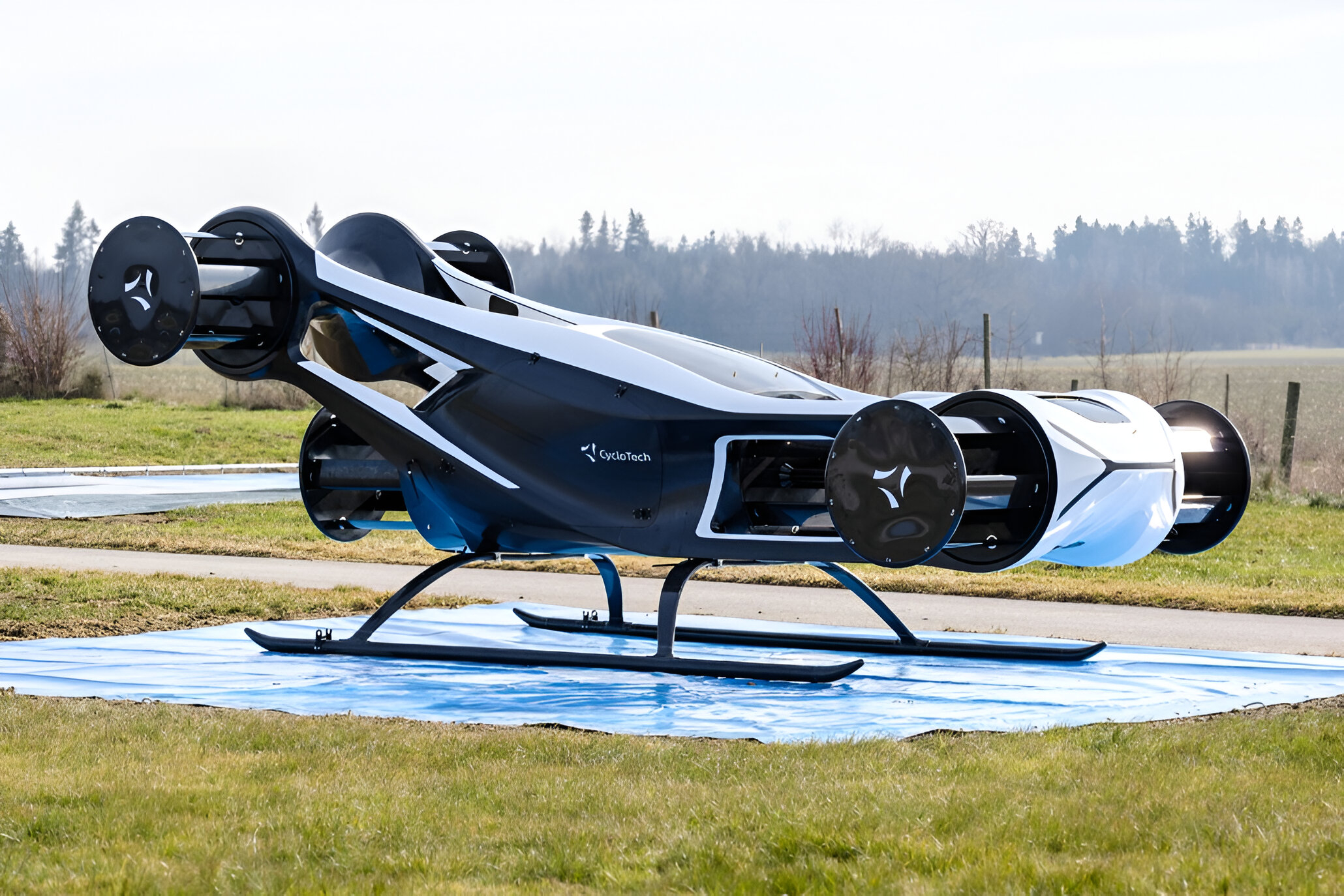The Austrian company Cyclotech has successfully conducted the first flight test of their “Blackbird” prototype – a remarkable achievement that represents the world’s first aircraft powered by six barrel-shaped “Cyclorotors.” This unique propulsion system offers potential advantages that could make Cyclotech a significant player in the future of urban air mobility.
The Cyclorotor: A Radical Propulsion Concept

At the heart of Cyclotech’s innovation are the strange barrel-shaped rotors that power the aircraft. Unlike conventional propellers or rotors that spin like fans, each Cyclorotor is a cylindrical drum with walls made up of pivoting airfoil blades. As the entire barrel spins at a constant rate, these blades continuously adjust their angle or “pitch” similar to how helicopter blades do – but in a completely different configuration.
This design is based on the Voith-Schneider Propeller, a propulsion system more commonly seen in certain specialized marine vessels. The mechanical arrangement uses a tilting disc similar to a helicopter’s swashplate that ensures each blade tilts into the airflow at precisely the right moment during rotation, then tilts back out again. The result is a propulsion system that can instantly vector thrust in any direction within a 360-degree range – something conventional propellers simply cannot do.
Superior Responsiveness and Control

The most significant advantage of Cyclotech’s approach lies in its responsiveness. When hovering in gusty conditions, eVTOL aircraft must make split-second thrust adjustments across multiple propulsion points to maintain stability. Traditional propellers need time to spin up or down to change thrust levels, creating a slight delay even with powerful electric motors.
Cyclorotors solve this problem elegantly. Since the barrels already spin at a constant rate, changing thrust direction or magnitude requires only adjusting the blade angles – a near-instantaneous process. This potentially allows for much more precise control in challenging flight conditions, which could translate to improved stability, passenger comfort, and safety margins. For aircraft designed to operate in urban environments where wind patterns can be unpredictable due to buildings, this responsiveness could prove invaluable.
The Blackbird Prototype: Design and Configuration

The Blackbird prototype that successfully completed its maiden flight features a distinctive configuration with six Cyclorotors strategically positioned around the airframe. Four are mounted at the corners, similar to a quadcopter drone layout, providing the primary lift and control. What makes the design particularly interesting are the additional two barrels mounted under the front and rear of the aircraft at right angles to the others.
This arrangement isn’t just about redundancy (though that’s certainly important for safety). The perpendicular orientation of these additional rotors allows them to generate sideways or twisting components of thrust for enhanced maneuverability. This could potentially make the Blackbird more comfortable for passengers by enabling smoother transitions between hover and forward flight, or more gentle turning maneuvers.
Impressively, the Cyclotech team developed this prototype from concept to first flight in just 11 months. While not a full-sized aircraft (it weighs 750 lb/340 kg with no passenger seats), this demonstration platform will allow the company to thoroughly test and refine their unique propulsion technology.
Future Vision: From Prototype to Production

Looking ahead, Cyclotech envisions their production model (currently called “CruiseUp”) as a two-seater personal aircraft with a 62-mile (100 km) range and top speed around 93 mph (150 km/h). Rather than competing in the crowded air taxi market that requires extensive certification, they’re positioning it as a personal “buy and fly” aircraft for individual owners.
The company isn’t rushing to market, with production tentatively scheduled for around 2035. Their business strategy appears more focused on proving and perfecting their Cyclorotor propulsion system, potentially making it available for various applications beyond their own aircraft. They’ve already explored cargo-carrying variants in partnership with Yamato.
While we’re still in the early days of testing, the successful maiden flight of Blackbird marks an important milestone for this unusual approach to flight. As Cyclotech begins its comprehensive flight test campaign, we’ll learn more about whether these strange spinning barrels might represent a significant advancement in how we take to the skies, alongside other groundbreaking flying machines that have changed the world.



























